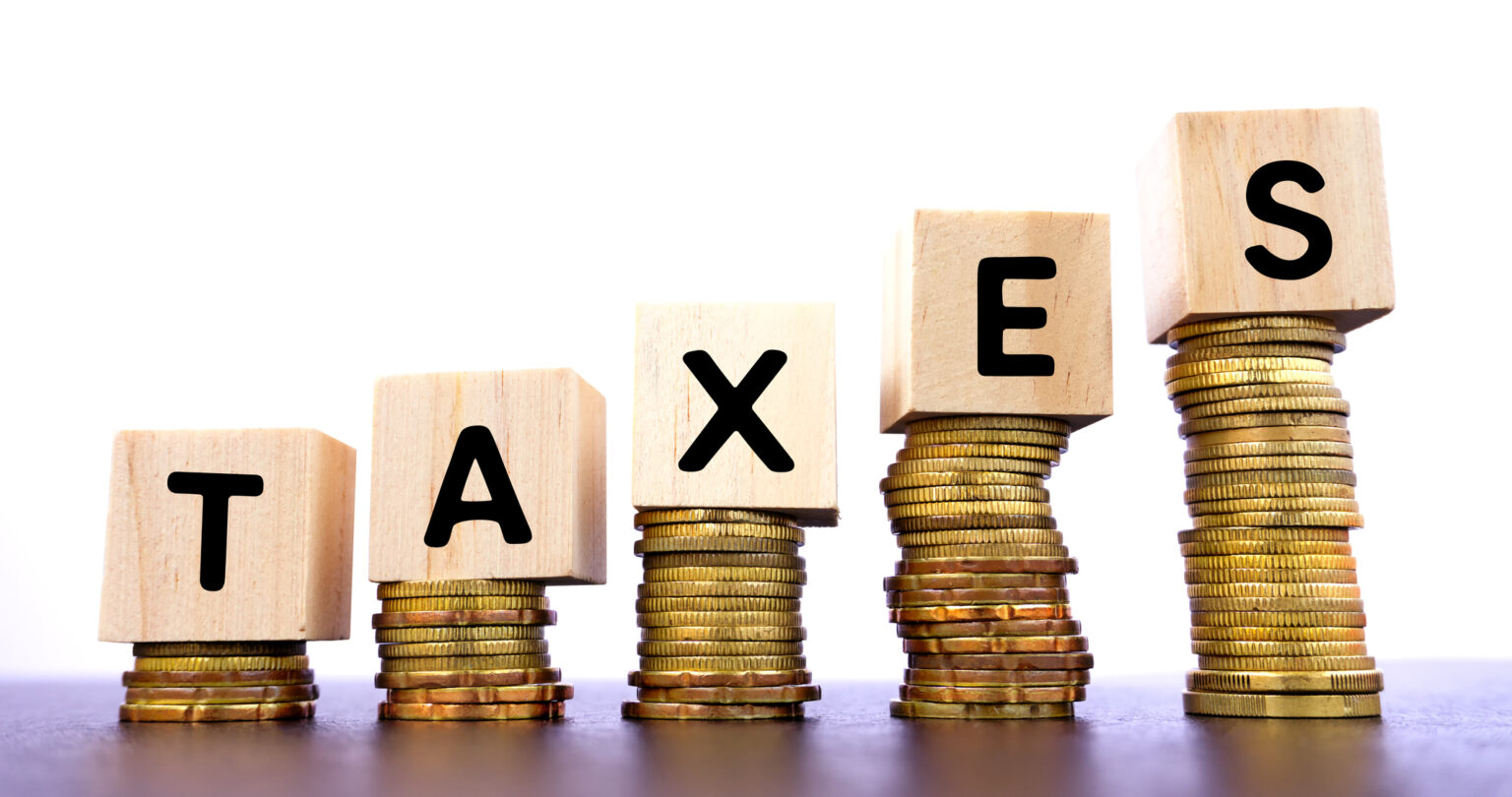子育てをしていると、お子さんが成長するにつれて「お金」に関する疑問や興味がどんどん増えてくることと思います。その中でも「税金」は、大人にとっては身近な存在でありながら、子どもにとってはなかなか理解しづらいトピックのひとつではないでしょうか。
しかし、税金の仕組みを早い段階から学んでおくことは、将来お子さんが社会人になったときに「なぜお金を払わなければいけないのか」「そのお金がどのように使われているのか」を納得する上でとても大切です。また、小学生のうちに税金について少しでも知識を得ておくと、身近なものの見方がぐっと変わり、社会に対する関心も高まります。
本記事では、親御さんが小学生のお子さんに「税金ってなに?」と聞かれたときに、どのように説明したらよいかを一緒に考えていきましょう。税金はどのように集められ、どんなところで役立っているのかを、親御さんの視点からわかりやすく解説していきます。お子さんとの会話にぜひお役立てください。
1.「税金」ってなに? 親から子に伝えるポイント
税金は、国や地方公共団体(都道府県や市区町村)が、道路や公園、学校など公共のサービスや施設を維持・運営するために集めるお金です。子どもに伝えるときは、以下のようなポイントを押さえると理解しやすくなります。
- みんなで“町や国を支えるため”に出し合うお金
- 「道路を直したり、公園をきれいにしたり、学校を運営したりするための費用を、たった1人や数人だけで負担するのは無理があるよね」と話してみましょう。すると、「じゃあみんなで少しずつ出し合えばいいね」という考え方が自然と出てきます。
- 「お金を出し合うって、まるでクラスで使う道具をみんなでおこづかいから少しずつ出して買うようなイメージかも」と、子どもの日常に近い例を用いると伝わりやすくなります。
- 税金がないと困ること
- 「もし税金がなかったら、道路の修理も学校の維持もできなくなるかもしれない。ゴミの収集だってされなくなったら大変だよね」と、税金がなくなった場合のイメージを伝えると、その必要性を実感しやすいでしょう。
- 「自分たちの安心・安全を守る仕組みのために必要なんだよ」と付け加えると、子どもは「なるほど、じゃあ重要なんだね!」と前向きにとらえやすくなります。
- 大人になったら自分も支える側になる
- 「今はおこづかいでお菓子を買うときに消費税を払っているくらいだけれど、大人になって働くようになると、今度は所得税とか住民税を払うことになるんだよ」と、将来の姿を一緒に想像してみるのも良いでしょう。
- そうすることで、「自分もいつか“町や国を支える一員”になるんだ」とお子さんが意識するきっかけになります。
2.税金が私たちの生活にもたらすメリット:子どもに伝えやすい例
親御さんとしては、「税金は誰かに強制されて払うもの」というネガティブな印象だけで終わらせたくないですよね。そこで、「税金のおかげで私たちの生活がどのように助けられているか」をポジティブに伝えるのがおすすめです。以下のような例を示すと、子どももイメージしやすくなります。
- メリット1:道路や交通の整備
- 子どもが毎日通う道路や歩道橋、信号機の整備に税金が使われていることを伝えましょう。
- 「道がデコボコだとケガをするかもしれないけど、税金を使って道路を直してくれるから安全に通学できるよね」と、具体的な場面を思い浮かべてもらうといいですね。
- メリット2:学校の運営と教育費の支援
- 「小学校や中学校は義務教育だから、授業料がいらないよね。これも税金のおかげなんだよ」という説明はとてもわかりやすいです。
- 「もし税金がなかったら、高い学費を払わないと学校に行けなくなるかもしれない」という話題を出すと、学べる環境がいかに当たり前でないかを感じ取ってもらえます。
- メリット3:医療や防災のサポート
- 「救急車や消防車で助けてもらうとき、それらを動かすためのお金も税金でまかなわれているんだよ」と話してみてください。
- 「災害が起きたときの避難所や、堤防を作って洪水を防ぐのも税金だよ」と加えると、日頃意識しにくい部分でも税金が役立っていることを理解できるでしょう。
- メリット4:公園や図書館などの公共施設
- 「普段よく行く公園や図書館も、実は税金が使われて維持・運営されているんだよ」と言うと、身近な場所への関心が高まります。
- 「遊具が壊れたら直してもらえるのも税金のおかげ」というように、具体的に伝えるのがポイントです。
3.どんな種類の税金があるの? 子ども目線でシンプルに伝えるコツ
子どもに「税金」を説明しようとすると「いろんな種類がありすぎて混乱する…」と思う親御さんも多いかもしれません。実際、大人でもすべてを正確に理解している人はそう多くないでしょう。まずは大きく2つに分けて伝えるとシンプルです。
- 国に納める「国税」
- 代表的なのは「消費税」や「所得税」、「法人税」など。
- 「消費税はお買い物のときに値段の一部として払っているんだよ」と話すと、お子さんも「そういえばレシートに書いてあるね!」と身近に感じやすくなります。
- 地方自治体に納める「地方税」
- たとえば「住民税」や「固定資産税」、「自動車税」などがあります。
- 「住民税は、自分が住んでいる町を良くするために払うお金なんだよ」と簡単にまとめてあげると、お子さんの理解もスムーズです。
ここでは深掘りしすぎず、「大きく国税と地方税があって、それぞれ国や自治体がやることのために使われているんだね」くらいのイメージを共有すればOK。子どもが興味を持ったら、さらに詳しく調べたり、地方税は地域のどんな事業に使われているのか話し合ったりしてみると良いでしょう。
4.税金はどうやって集められる? 親が知っておきたい間接税と直接税
税金の集め方について、小学生のお子さんに「消費税は間接税、所得税は直接税」などと専門用語で話すと難しく感じてしまいます。そこで、親御さん自身が理解したうえで、噛み砕いて話す方法を考えてみましょう。
- 間接税(かんせつぜい)
- 消費税が代表的。物やサービスを買うときに、商品代金に上乗せされている形で払う税金です。
- 「お菓子を買うときにも税金を払っているんだよ」と伝えると、「えっ!? 僕も(私も)払っているの?」と子どもは驚くかもしれません。
- この驚きが、「自分も社会の一員として税金を負担している」という大切な気づきにつながります。
- 直接税(ちょくせつぜい)
- 働いて得たお給料(所得)にかかる「所得税」や、会社が利益を出したときに払う「法人税」などが代表例です。
- 「大人になると、自分のお給料から税金が引かれることになるんだよ」と子どもに伝えると、「お父さんやお母さんはお給料をもらって、その中から税金を支払っているんだね」と理解を深めてもらえます。
- 「自営業の人は、確定申告といって自分で1年の収入や経費を計算して納めるんだよ」と話すと、働き方によって支払い方法も違うことがわかります。
5.税金はどこに使われているの? 親子でチェックしてみよう
税金を納める目的は、「みんなが安心して、よりよい暮らしをするため」です。具体的には、国や自治体は集めた税金を以下のような分野に使っています。お子さんと一緒に「どんな使われ方をしているのかな?」と身近な視点でチェックしてみましょう。
- 社会保障(医療・福祉)
- お年寄りや体が不自由な方の介護サービス、医療費の補助、年金など。
- 「おじいちゃん・おばあちゃんが病院に行ったときの医療費が少し安くなる仕組みも、税金が一部を補っているんだよ」と伝えると、世代間の助け合いをイメージしやすくなります。
- 教育・文化
- 学校の運営や施設整備、教科書の無償配布、博物館や図書館など。
- 「学校で机やイスが新しくなったときも税金が使われたのかもしれないね」と具体例を出すと、お子さんは「へぇ~!」と興味を持ってくれるかもしれません。
- 公共事業・インフラ整備
- 道路や橋、電車やバス、上下水道の整備など。
- 「水道から安全な水が出るのも、橋が壊れていないのも当たり前と思っているけど、実は税金で支えられているんだよ」と話してあげましょう。
- 防災・安全対策
- 消防署、警察署、自衛隊の活動費用、災害時の復旧・支援など。
- 「台風や地震が起きたら、避難所を開いたり壊れた道路を直したりするのに大きなお金が必要。それを支えるのも税金なんだよ」と伝えると、「だからみんなが安心して住めるようになるんだね」と納得しやすくなります。
- その他(環境保護や公務員の給与など)
- 環境対策や国・地方公共団体の職員が仕事をするための給与、行政サービスの運営費など。
- 「ゴミのリサイクルや町をきれいにする活動も税金が使われているんだよ」と言うと、お子さんも興味を持つかもしれません。
このようにさまざまな分野で税金が使われています。親御さんも改めて確認することで、「ここに税金が使われているんだ」と新しい発見があるかもしれません。
6.具体例でイメージをふくらませよう:親子の会話例
「税金がない世界って、どんな感じかな?」とお子さんに問いかけてみると、想像力がふくらみます。
- 会話例1:災害時のことを考えてみる
- 親:「もし台風で川があふれて橋が壊れちゃったら、直すのに大きな費用が必要になるよね。税金がなかったら、その町の人たちが自分たちで修理代を全部払わないといけなくなるんだよ」
- 子:「そんなの大変! みんなで出し合った方がいいね」
- 親:「そうだね。それが税金を使う意味なんだよ」
- 会話例2:学校の運営費を想像してみる
- 親:「もし学校の先生に払うお給料や校舎の修理費が全部自分たちで負担することになったらどうなるかな?」
- 子:「毎月すごく高いお金がかかりそう…」
- 親:「そうだよね。そうすると学校に行けない子が出るかもしれない。みんなが勉強できるようにするには、みんなから集めた税金が必要なんだね」
このように具体例を一緒に考えていくと、子どもは「税金がないと不便だし、みんなが困る」ことを理解しやすくなります。
7.「まだ小学生だから税金は関係ない」は本当?
お子さんの中には「自分はまだ働いていないし、税金なんて関係ないよね」と思う子もいるかもしれません。ですが、実はそうではありません。
- 消費税は子どもでも払っている
- 子どもがスーパーやコンビニで100円のお菓子を買ったら、そこには消費税が含まれています。たとえば消費税10%なら、商品自体の価格は約91円で、残り約9円が消費税です。
- このことを知ると、「あ、僕(私)も税金を払っているんだ!」と驚くかもしれません。
- 施設やサービスを利用している
- 学校や公園、図書館といった公共サービスを利用している以上、子どもたちも税金の恩恵を受けている存在だといえます。
- 「自分は利用してばかりかもしれないけれど、将来働いたら今度は払う側になって支えていくんだね」と伝えてあげると、一歩大人に近づいたような気持ちになり、自立心が育まれることもあります。
8. 親ができるサポートと、これからの学びにつなげるヒント
税金は、“みんなで社会を支える”ために欠かせない仕組みです。子どもたちにとっては最初は難しく感じるかもしれませんが、身近な例を交えて話すことで「自分も社会の一員なんだ」と気づくきっかけにもなります。
親ができるサポートのポイント
- レシートを一緒に確認してみる
- 買い物をしたときのレシートを見せて、「消費税はいくらだったかな?」と親子で確認すると、「自分も税金を払っている」実感を持ちやすくなります。
- 周りの施設を改めて見直す
- 通学路や近所の公園、図書館など「税金が使われている場所」を具体的に見つけてみましょう。「あの街灯や遊具も、実は税金で整備されているんだね」という気づきが得られます。
- ニュースや地域の広報誌を活用する
- 「町の道路工事にいくらかかるらしいよ」「新しい図書館が建つみたい」など、地域情報をお子さんと共有すると、税金の使われ方をよりリアルに感じられます。
- 将来の自分を想像させる
- 「将来お店を開きたい」「○○の仕事をしたい」という子どもの夢に絡めて、「それぞれの仕事でも税金を払ったり、社会保険を支払ったりするよ」と話すと、社会構造に興味を持ちやすくなります。
大切なのは、「税金はイヤイヤ払うもの」ではなく、「みんなで少しずつ負担することで、より良い生活や未来をつくるための投資」だと伝えてあげることです。お子さんと一緒に税金の話題を共有する中で、「社会を支える」ことへの責任感や連帯感が自然と育まれていくでしょう。
これを機に、親御さん自身も税金について改めて見直してみてはいかがでしょうか。たとえば住民税や所得税がどのように計算され、どこに使われるのかを少し調べるだけでも、「ここでも使われているのか」「こういう仕組みなのか」と新たな発見があるかもしれません。子どもと一緒に学びを深めれば、お子さんにとっても「お父さん・お母さんと一緒に調べてみた」という貴重な体験になります。
税金は私たちの生活や未来に直結している大事なテーマです。小学生のうちから少しずつ理解を深めることで、将来きっと役に立つ知識や考え方が身につくはず。ぜひ家族で話し合ったり、調べ物をしたりしてみてくださいね。
What Are Taxes? Explaining Their Mechanism and Role for Children
As a parent, you’ve probably noticed that as your child grows, they become more curious about money. Among the various financial topics, “taxes” can be particularly difficult for children to grasp—though for adults, taxes are an everyday reality.
Understanding how taxes work from an early age can help children see why taxes exist and how they benefit society. It not only prepares them for adulthood but also broadens their perspective on the world right now.
In this article, we’ll explore how you, as a parent, can explain “What are taxes?” to your elementary school-aged child. We’ll look at how taxes are collected, where the money goes, and how it affects our daily lives. Feel free to use these ideas in your family conversations.
1. What Are Taxes? Key Points to Explain to Your Child
Taxes are money collected by the national and local governments (prefectures and municipalities) to maintain and operate public services such as roads, parks, and schools. Here are some points you can use to make taxes easier for kids to understand:
- Money Contributed by Everyone to Support the Town or Country
- You can start by saying, “If only one person had to pay for everything—like fixing roads and maintaining schools—it would be impossible.” This helps your child realize that it’s fairer to have everyone chip in a little bit.
- You might relate it to their daily life by comparing it to a situation where a class shares the cost of classroom supplies.
- Why Life Without Taxes Would Be Difficult
- “If there were no taxes, it would be hard to fix roads or run schools. Even garbage collection might stop,” is a good way to show what happens if taxes disappear.
- Emphasize that taxes fund the systems that protect our safety and well-being.
- Transitioning to Becoming a Taxpayer in the Future
- “Right now, you’re paying sales tax when you buy snacks, but when you grow up and start working, you’ll also pay income tax and other taxes.”
- This helps children imagine themselves as part of the system that supports society.
2. Benefits of Taxes: Easy-to-Explain Examples for Children
As a parent, you don’t want taxes to just seem like forced payments. Show your child how taxes help our daily lives in positive ways. Here are some concrete examples:
- Benefit 1: Roads and Public Transportation
- Point out that the roads and sidewalks your child uses to get to school are maintained thanks to tax money.
- “If roads were bumpy and full of holes, it could be dangerous, but taxes help keep them safe.”
- Benefit 2: School Operations and Education Support
- Explain that public education in Japan is free (or nearly free) because of tax funding.
- “Without taxes, some children might not be able to afford school. With taxes, everyone gets a chance to learn.”
- Benefit 3: Medical and Disaster Support
- Ambulances, fire departments, and hospital subsidies are partially funded by taxes.
- “When there’s a typhoon or an earthquake, taxes help fix the damage and keep us safe.”
- Benefit 4: Public Facilities Like Parks and Libraries
- “That playground or library you enjoy is kept clean and safe using tax money,” helps them connect something fun and positive to taxes.
3. What Kinds of Taxes Are There? Simplifying for Kids
Adults often find taxes confusing because there are so many types. For a child, you can start by explaining there are two main categories:
- National Taxes
- These include consumption tax, income tax, and corporate tax.
- “Consumption tax is added to everything you buy,” is a simple way to show how we all pay it.
- Local Taxes
- Examples include resident tax, property tax, and automobile tax, which fund services in the area where you live.
- “Resident tax helps pay for the upkeep of our town,” is enough for a basic explanation.
Don’t worry about detailing every tax. If your child shows more interest, you can explore further.
4. How Are Taxes Collected? Indirect vs. Direct Tax
To avoid overwhelming your child, it helps if you, as a parent, understand the basics of indirect and direct taxes first:
- Indirect Taxes
- Consumption tax is the main example. You pay it automatically whenever you buy goods or services.
- Telling your child, “You’re also paying tax when you buy candy,” can surprise them and spark an understanding that they’re part of society.
- Direct Taxes
- These include income tax or corporate tax.
- You can say, “When you work and earn a salary, tax is deducted from your earnings,” so they realize adults pay taxes regularly.
- Mentioning self-employment and filing a tax return can also open their eyes to the variety of tax systems.
5. Where Do Taxes Go? Checking Together with Your Child
Taxes are collected to make life safer and more comfortable for everyone. Here are some broad categories you can explore with your child:
- Social Security (Medical Care, Welfare)
- This covers nursing care, hospital subsidies, and pensions.
- “Grandma and Grandpa pay less for healthcare because taxes cover some costs,” illustrates intergenerational support.
- Education and Culture
- School operations, textbook funding, museums, and libraries.
- “Those new desks in your classroom might have been paid for with tax money.”
- Public Works and Infrastructure
- Roads, bridges, public transit, and water supply systems.
- Emphasize how these are everyday conveniences funded by taxes.
- Disaster Prevention and Safety Measures
- Fire departments, police, military, and disaster recovery.
- “When there’s a flood, taxes help fix the roads and bridges.”
- Others (Environmental Measures, Government Salaries)
- Environmental protection, salaries for public employees, and government operations.
- “Recycling programs and city cleaning initiatives often rely on tax money.”
Exploring these areas can be eye-opening for both you and your child.
6. Imagining Concrete Examples: Parent-Child Dialogue
Encourage your child to think about “What if there were no taxes?”
- Dialogue Example 1: During a Disaster
- Parent: “If a typhoon floods a river and breaks a bridge, it’s expensive to fix. Without taxes, local people would have to pay for it themselves.”
- Child: “That’s too much for a few people to handle!”
- Parent: “Exactly. That’s why taxes are important.”
- Dialogue Example 2: Running a School
- Parent: “If we had to pay every teacher’s salary and repair the building on our own, it would cost us a lot of money.”
- Child: “Then some kids might not afford school.”
- Parent: “Right. That’s why we need taxes to ensure everyone can learn.”
7. Is It True That Elementary Schoolers Don’t Pay Taxes?
Children might believe they’re not involved in taxes yet, but actually:
- They Pay Consumption Tax
- “When you buy a 100-yen snack, part of that is tax.”
- This can be a big revelation for them, helping them realize they already contribute.
- They Benefit from Public Services
- Using schools, libraries, and parks means they receive the benefits funded by taxes.
- “Although you don’t pay big taxes yet, one day you’ll work and support society,” can help them feel more grown-up and responsible.
Conclusion: Supporting Your Child’s Understanding and Future Learning
Taxes are essential for everyone to help sustain society. Even if it feels complicated at first, sharing relatable examples makes children realize, “I’m part of this system, too.”
8. Ways You Can Support Your Child
- Check Receipts Together
- Show them how much consumption tax they pay on everyday items.
- Review Local Facilities
- Point out how the road, park, or library they use is maintained by tax money.
- Use News or Community Bulletins
- Talk about local construction projects or new facilities being built and how taxes fund them.
- Tie It to Their Future
- If they have dreams of running a business or working in a particular field, mention how taxes and social security apply to all jobs.
Emphasize that taxes are not just an obligation but an investment in better living conditions and a brighter future for everyone. By learning about taxes together, you can nurture your child’s sense of responsibility and community.
This is also a chance for you to revisit your own understanding of how taxes work. Look into how resident tax or income tax is calculated and spent—you might be surprised at what you find. Researching with your child can be a meaningful learning experience for both of you.
Ultimately, taxes connect directly to our daily lives and our future. Helping your child understand this important theme while they’re still in elementary school will give them knowledge and perspectives that will surely benefit them in years to come. Feel free to explore, discuss, and discover the value of taxes as a family.




コメント